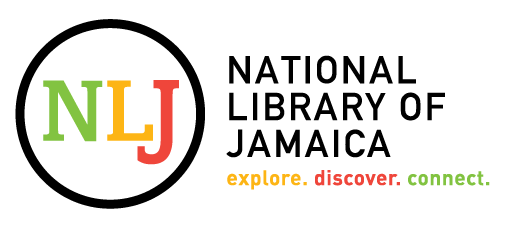Jamaican food : history, biology, culture / B.W. Higman. PRINT
Publication details: Jamaica : University of the West Indies Press, 2008.Description: xix, 580 pages : illustrations (some colour), maps ; 27 cmContent type:- text
- unmediated
- volume
- 9789766402051
- 9766402051
- Food habits -- Jamaica
- Food -- Jamaica -- History
- Food crops -- Jamaica
- Plants, Edible -- Jamaica
- Food of animal origin -- Jamaica
- Cooking, Jamaican
- Jamaica -- Social life and customs
- Cookery, Jamaican
- Food consumption Jamaica
- Food crops Jamaica
- Food habits Jamaica
- Food of animal origin Jamaica
- Jamaica Social life and customs
- Plants, Edible Jamaica
- 394.1 Ja Hig 22
| Item type | Current library | Collection | Shelving location | Call number | Status | Date due | Barcode | |
|---|---|---|---|---|---|---|---|---|
|
|
National Library of Jamaica | Jamaican | Rare Books Floor | 394.1 Ja Hig (Browse shelf(Opens below)) | Available | 1000000191868 | ||
|
|
National Library of Jamaica | Jamaican | Daphne Douglas Reading Room | 394.1 Ja Hig (Browse shelf(Opens below)) | Available | 1000000191875 |
Browsing National Library of Jamaica shelves, Shelving location: Daphne Douglas Reading Room, Collection: Jamaican Close shelf browser (Hides shelf browser)
| No cover image available | No cover image available |

|

|

|
No cover image available |

|
||
| 380.97292 Ja Jam Services and transportation survey for Jamaica / | 381.1 Int Contemporary Caribbean design / | 389.6092 Ja Hen The development of the Jamaica Bureau of Standards 1973- 2000 / | 394.1 Ja Hig Jamaican food : history, biology, culture / | 394.26 Ja Isl Island cultures and festivals : a creative ecosystem / | 398.21 Ja Tro Negro customs and folks-stories of Jamaica. | 398.245 Ja Nel Patchwork : a potpourri of Jamaican Anansi stories and anecdotes / |
Includes bibliographical references (pages 511-547) and index.
Why do Jamaicans eat what they eat? -- Systems of supply -- Roots -- Stems, leaves -- Fruits -- Seeds -- Molluscs, crustaceans, insects, reptiles -- Fish -- Birds -- Mammals -- Salt, earth, water -- Conclusion.
Historical study of food and the anthropology of food are recent and growing fields of scholarly inquiry. Why people eat what they do and how they prepare it is an important means of studying a culture. It can reveal much about a culture's crop production, economy, eating rituals, preparation methods, festivals, foodways, history and environmental care, and degradation. This book sheds new light on food and cultural practices in Jamaica from the time of the earliest Taino inhabitants through the introduction of different foodways by enslaved cultures, to creole adaptations to the fast-food phenomena of the twentieth and twenty-first centuries. The author examines the shift in Jamaican food practices over time, from the Tainos' use of bitter cassava to the Maroons' introduction of jerk pork, and the population's love affair with the fruits of the island such as paw paw, guava, star apple, and avocado pear. In this well-written and accessible study, the author traces how endemic animals, delicacies such as the turtle, ringtail pigeon, black land crab and mountain mullet, barely retained their popular status into the early twentieth century and are now almost completely forgotten, their populations dramatically depleted, often endangered. The two main sections of the book deal separately with plants and animals. Plants are grouped together according to the parts of them used as food: roots, stalks and leaves, fruits and seeds. Generally, all aspects of a particular plant have been discussed together and the plant as a whole has been located in its dominant use. Animals are treated in the same way, putting all of their uses in a single place but grouped into biological families.
There are no comments on this title.

